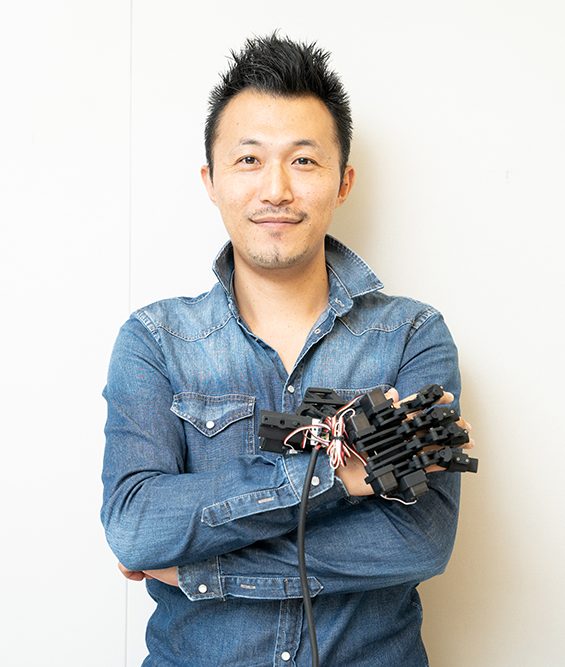
Shinichi Furuya
Researcher and Project manager at Sony Computer Science Laboratories
Musical Dynaformics
Over the centuries, the virtuosity of musicians has fascinated audiences worldwide. Because musical performance involves both coordinated and independent movements of a large number of joints, it has not been elucidated firstly what biomechanical principles govern such virtuosic motor skills, and secondly what neuroplastic mechanisms underlie acquisition, sophistication, loss, and restoration of the virtuosity. To resolve these issues, I have been not only utilizing the concepts and technologies of robotics but also combining them with neurophysiological knowledge and techniques called “musical dynaformics.” The present talk introduces four research areas probing musical expertise by means of robotics. First, inverse and forward dynamics of a rigid body model allows the uncovering of neuromuscular skills optimizing energetic efficiency of movements by skilled pianists. Second, the combined use of haptic devices with electroenpharogram and transcranial magnetic stimulation identified the somatosensory-motor integration mechanisms subserving the production of the fast and precise movements of skilled pianists. Third, a miniature haptic device that can be attached to a musical instrument demonstrated impairments of the somatosensory-motor integration mechanism (i.e. internal model) in pianists suffering from focal dystonia. Fourth, specialized ways of utilizing robotics such as a haptic device and hand exo-skeleton based on neuroscientific theories enable enhancement of both somatosensory perception and motor dexterity of skilled pianists. Through the talk, I would like to propose a novel viewpoint of robotics as a unique means of probing and boosting sensorimotor virtuosity.
Biography
Shinichi Furuya is a researcher and project manager at Sony Computer Science Laboratories, and research associate professor of the Musical Skill and Injury Center (MuSIC) at Sophia University. He also holds a position as a guest professor at the Institute for Music Physiology and Musician’s Medicine at Hanover University of Music, Drama and Media in Germany. After studying mechanical engineering (BSc), biomechanics and exercise physiology (MS), and medical science (PhD) at Osaka University in Japan, he worked at University of Minnesota (USA), Hanover University of Music, Drama and Media (Germany), and Sophia University (Japan). He received a Postdoctoral Fellowship at Alexander von Humboldt Foundation (AvH) and the Heisenberg Fellowship at Germany Research Foundation (DFG) in Germany. His research goal is to enhance musical expertise and prevent musician’s injuries. To this end, he studies the neuromuscular mechanisms subserving acquisition, sophistication, loss, and restoration of sensorimotor skills in musical performance. www.neuropiano.net

